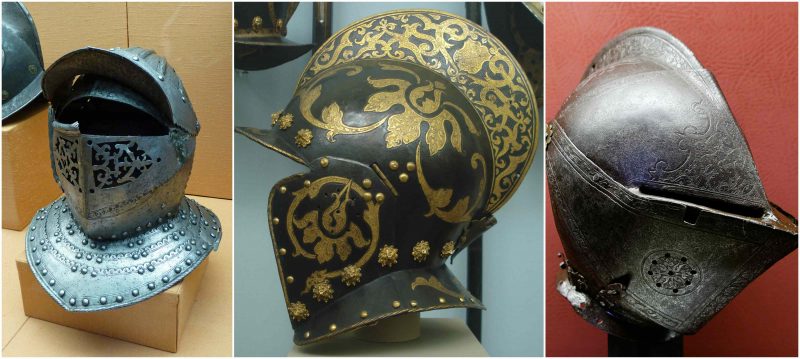The most commonly used war helmet of the 16th and 17th centuries was the Burgonet – pronounced Burg-oh-neht.
Most were highly ornate and had a ridge that ran from the top of the forehead over the head to the bottom of the skull; the ridge flared out so as to sit on the shoulders to protect the neck.


The helmet had a bill similar to those found on baseball caps today, used to not only keep the eyes protected from the sun but to foil a vertical blow.
It often had detachable cheek pieces to guard the side of the face. Some had a falling buffe, which was a type of visor made of separate metal plates that hung from the sides of the bill, covering the throat and lower face up to the eyes. Rather than being pulled down for use, the buffe was brought up from the resting place at the neck.
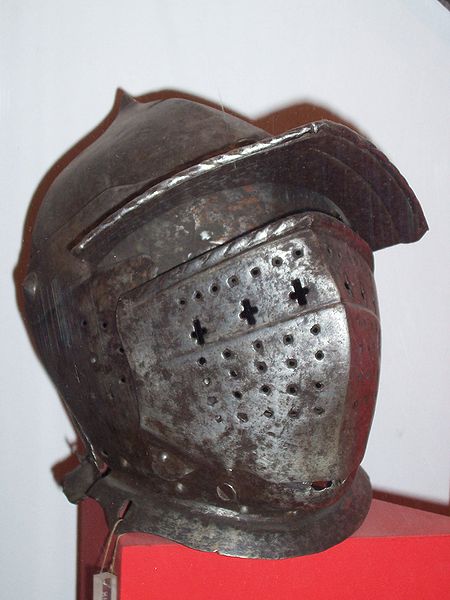
The helmet was made from steel and weighed from three and a half to five pounds, depending on the use of the cheek plates and buffes riveted onto the helmets. Some Burgonet helmets had a completely-closed face, with either an opening cut for the eyes or a circle of small holes that provided a limited vision but extreme protection. The closed-faced Burgonet was the most popular among the cavalry. Most of the helmets were polished to a high sheen, but many were coated with a caustic salt mixture of potassium nitrate and sodium hydroxide, called blueing. This process is still being used for firearms today.
This type of helmet was popular during the reign of the Tudors, Henry the VII and VIII, Queen Elizabeth the First, and her Stuart successor King James the First. Burgonets retained their popularity until armor and swords were abandoned in favor of firearms for warfare. The helmets were lighter and less cumbersome than other types and allowed for better vision and more air to reach the face to help with ventilation.
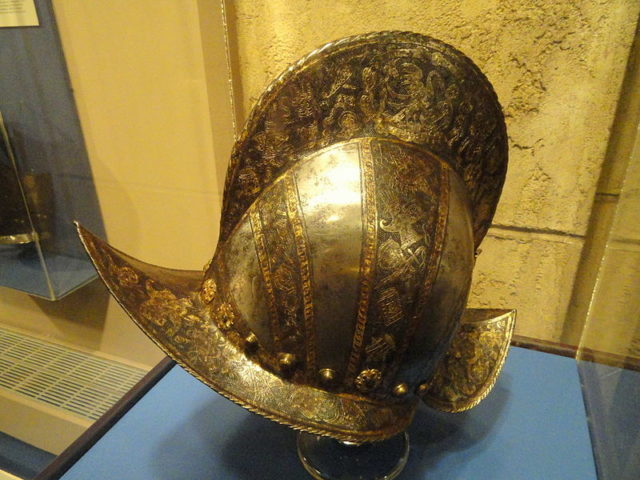
Some Burgonets were so heavily etched, pierced, or carved that they lost their effectiveness as war helmets and were used primarily for parades and other state occasions. Many were decorated with copper highlights, or painted with scrollwork.Kings and highly-situated officers usually had the most ornate helmets.
Continues below
Border Reivers, English and Scottish raiders along the border of England and Scotland during the push for Scotland’s independence, were fans of Burgonets and were the source of the nickname “steel bonnets.”
Polish Hussars also used the popular Burgonet helmet type; these were cavalry units in the Polish-Lithuanian Commonwealth from the 16th to the 18th centuries. The Winged Hussars were known for their wooden frames, covered with bird feathers, which they wore on their backs.
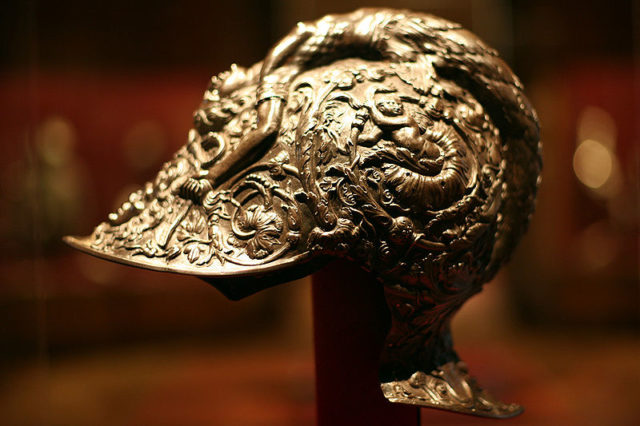
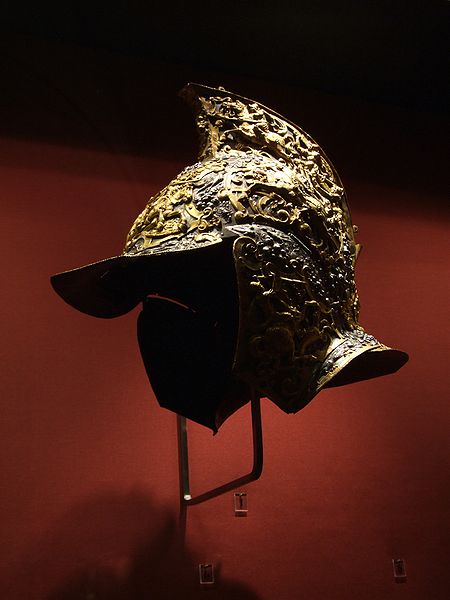
The noise the “wings” made caused the unit to sound much more fierce than it actually was, and sometimes this incited fear in the enemy’s horses. Wings were also incorporated onto their helmets, where flared pieces of pierced steel were used, formed into the shape of a wing on each side.
The Hussars combined the style of the Burgonets with lobster-tailed pot helmets, adding an adjustable nasal bar and leaf shaped visor.

The Burgonet was also used by Swiss infantry mercenaries, who were considered to be some of the best soldiers during the Renaissance up until Switzerland changed its policy to one of military isolationism.
These infantry soldiers were called “Pikemen” and used long 10 to 25-foot wooden spears with steel or iron spearheads for thrusting attacks. They modified their helmets by narrowing the cheek plates and shortening the back to uncover the nape of the neck. Shakespeare used Swiss mercenaries in his play, Hamlet, and called them “Switzers,” the commonly-used name for the Swiss during that time. The honor of the Swiss Guard’s being positioned at the Vatican descended from the last of these mercenaries. The Swiss later attempted to refine the helmet for use as a national helmet, but no design was considered suitable, and the project was discarded.
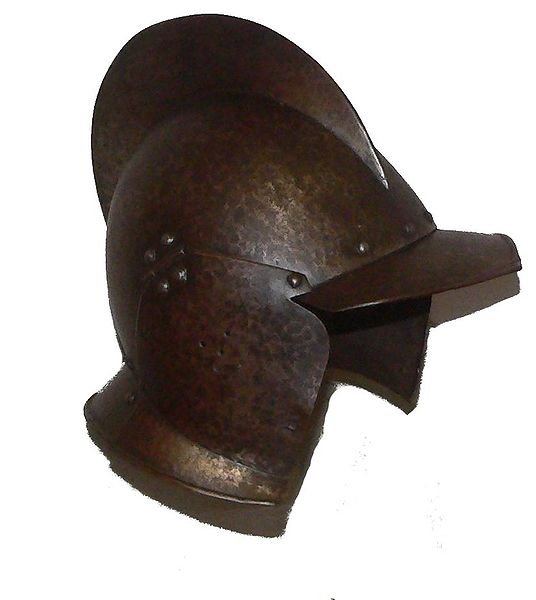
Although most of these elaborate helmets can be found only in museums, there are still some genuine Burgonet helmets available for sale.
A well-preserved Burgonet helmet can fetch up to $20,000 on the auction market. Many re-enactors and replica collectors purchase historically accurate and wearable models that can cost anywhere from $150.00 to $400.00, depending on the materials used, the gauge of the steel, and how ornate the buyer wants his purchase to be.
